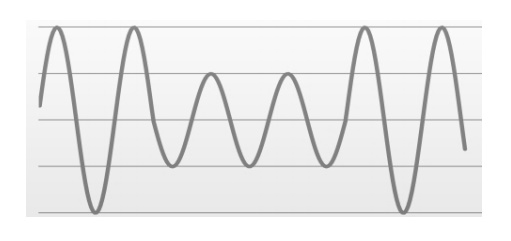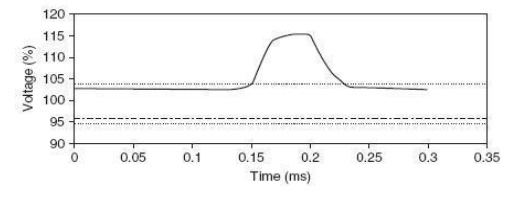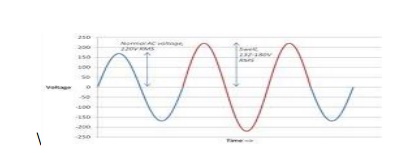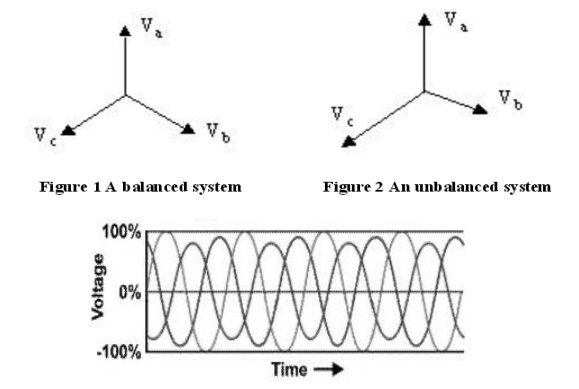Chapter: Power Quality : Introduction to Power Quality
Sags and Swells- Power Quality
Sags and Swells:
1. Voltage sag:
A
voltage sag or voltage dip is a short duration reduction in RMS voltage which
can be caused by a short circuit, overload or starting of electric motors.
Voltage sag
happens when the RMS voltage decreases between 10 and 90 percent of nominal
voltage for one-half cycle to one minute.
Some
references define the duration of sag for a period of 0.5 cycles to a few
seconds,
and longer duration of low voltage would be called “sustained sag".
There are
several factors which cause voltage sag to happen:
Since
the electric motors draw more current when they are starting than when they are
running at their rated speed, starting an electric motor can be a reason of voltage
sag.
When
a line-to-ground fault occurs, there will be voltage sag until the protective
switch gear operates.
Some
accidents in power lines such as lightning or falling an object can be a cause
of line-to-ground fault and voltage sag as a result.
Sudden
load changes or excessive loads can cause voltage sag.
Depending
on the transformer connections, transformers energizing could be another reason
for happening voltage sags.
Voltage
sags can arrive from the utility but most are caused by
in-building equipment. In residential homes, we usually see voltage sags when
the refrigerator, air-conditioner or furnace fan starts up.

2. Voltage Swell:
ü Swell -
an increase to between 1.1pu and 1.8 pu in rms voltage or current at the power
frequency durations from 0.5 to 1 minute
ü In the
case of a voltage swell due to a single line-to-ground (SLG) fault on the
system, the result is a temporary voltage rise on the un faulted phases, which
last for the duration of the fault. This is shown in the figure below:

Instantaneous
Voltage Swell Due to SLG fault
ü Voltage
swells can also be caused by the deenergization of a very large load.
ü It may
cause breakdown of components on the power supplies of the equipment, though
the effect may be a gradual, accumulative effect. It can cause control problems
and hardware failure in the equipment, due to overheating that could eventually
result to shutdown. Also, electronics and other sensitive equipment are prone
to damage due to voltage swell.


3. Voltage unbalance:
ü In a
balanced sinusoidal supply system the three line-neutral voltages are equal in
magnitude and are phase displaced from each other by 120 degrees (Figure 1).
Any differences that exist in the three voltage magnitudes and/or a shift in
the phase separation from 120 degrees is said to give rise to an unbalanced
supply (Figure 2)

ü The
utility can be the source of unbalanced voltages due to malfunctioning
equipment, including blown capacitor fuses, open-delta regulators, and
open-delta transformers. Open-delta equipment can be more susceptible to
voltage unbalance than closed-delta since they only utilize two phases to
perform their transformations.
Also,
voltage unbalance can also be caused by uneven single-phase load distribution
among the three phases - the likely culprit for a voltage unbalance of less
than 2%. Furthermore, severe cases (greater than 5%) can be attributed to
single-phasing in the utility’s distribution lateral feeders because of a blown
fuse due to fault or overloading on one phase.
4. Voltage Fluctuation:
ü Voltage
fluctuations can be described as repetitive or random variations of the voltage
envelope due to sudden changes in the real and reactive power drawn by a load.
The characteristics of voltage fluctuations depend on the load type and size
and the power system capacity.
ü Figure 1
illustrates an example of a fluctuating voltage waveform. The voltage waveform
exhibits variations in magnitude due to the fluctuating nature or intermittent
operation of connected loads.
ü The
frequency of the voltage envelope is often referred to as the flicker
frequency. Thus there are two important parameters to voltage fluctuations, the
frequency of fluctuation and the magnitude of fluctuation. Both of these
components are significant in the adverse effects of voltage fluctuations.

ü Voltage
fluctuations are caused when loads draw currents having significant sudden or
periodic variations. The fluctuating current that is drawn from the supply
causes additional voltage drops in the power system leading to fluctuations in
the supply voltage. Loads that exhibit continuous rapid variations are thus the
most likely cause of voltage fluctuations.
ü Arc
furnaces
ü Arc
welders
ü Installations
with frequent motor starts (air conditioner units, fans)
ü Motor
drives with cyclic operation (mine hoists, rolling mills)
ü Equipment
with excessive motor speed changes (wood chippers, car shredders)
Related Topics